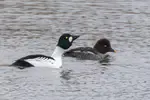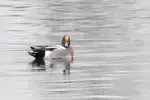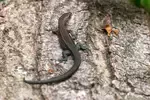- Home
- Nature Walks East of England
- Cambridgeshire walks
The Best Nature Walks in Cambridgeshire: A Photographer's Guide
Mist hangs low over a Fenland reedbed as the first light catches the water -- this is nature in cambridgehire at its quietest and most magical.
From the vast skies of the Fens to silver-birch woodlands Cambridgeshire is threaded with walks where you can hear the call of a shy warbler or watch the sun burn through morning fog.
After forty years exploring these paths with my camera, I've come back again and again to a handful of routes that offer the richest mix of wildlife, big views and seasonal colour.
In this guide, I'll share those favourite walks and what makes each one special, so you know exactly where to go -- and what to look for when you get there.
The Fens and Washes
This is the quintessential Cambridgeshire landscape.
When people think of this county, they often picture the vast, flat expanse of the Fens under an enormous sky. It’s an engineered landscape, shaped by drainage and agriculture, but it’s here that I’ve had some of my most profound encounters with nature.
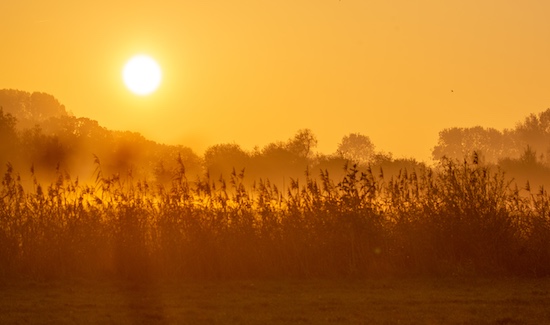 Sunrise in the Cambridgeshire Fens
Sunrise in the Cambridgeshire FensThe Ouse Washes
The first time someone told me the Ouse Washes were "just flood storage areas," I nearly laughed. Yes, they're engineered to prevent our homes from going underwater. But calling them "just" anything is like calling the Northern Lights "just chemistry."
When winter floods transform these farmer's fields into temporary lakes, something extraordinary happens.
Thousands of birds arrive as if responding to some ancient invitation. I've sat in the hides on bitter January mornings, breath steaming, watching more wildfowl than I could count settling onto the surface like living confetti.
Plan your visit
- Best For: Incredible winter bird spectacles, seeing vast flocks of swans and ducks.
- Key Wildlife: Whooper and Bewick's Swans, Wigeon, Teal, and many other wintering wildfowl.
- Practical Info: Best visited in winter when the washes are flooded. Major reserves are run by the RSPB and WWT, which have visitor centres, toilets, and accessible hides.
- Carol's Tip: Don't be put off by the "engineered" nature of this landscape. In the depths of winter, it's one of the most exciting and wildlife-rich places in the entire country. Wrap up warm and find a seat in a hide—the sheer number of birds is unforgettable.
- Guide: To follow along on a winter spectacle and get glimpses of Ely Cathedral in the background, take a look at my day at the Ouse Washes.
The Nene Washes
The Nene Washes gave me one of my greatest birding moments - my first Common Crane sighting.
Despite their name, these magnificent birds are anything but common in the UK. Up until that time, the tallest birds I had encountered in the countryside where Grey Herons, but the Cranes dwarf them! And that bugling call will haunt me (in a wonderful way) for ever.
Then there are also the Short-Eared Owls. Watching these raptors patrol at sunrise, their yellow eyes scanning the water edges for prey, pulled me into their world and wouldn't let go.
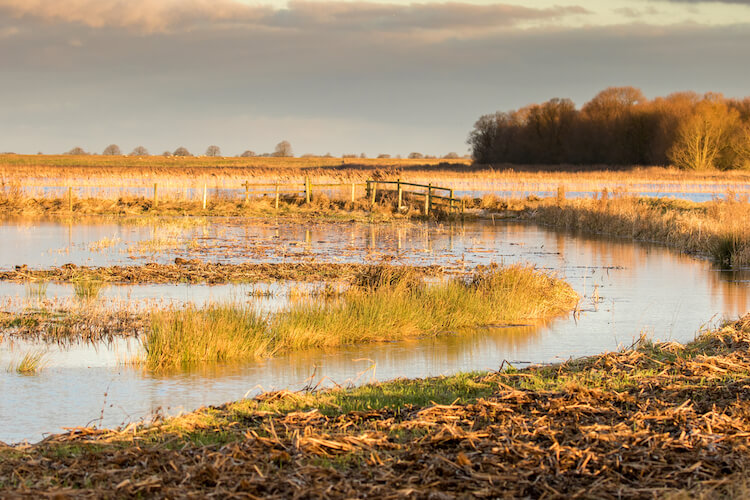 Sunrise at the Nene Washes
Sunrise at the Nene WashesPlan Your Visit:
- Best For: Rare bird sightings, atmospheric sunrises, a true sense of wildness
- Key Wildlife: Common Crane, Short-Eared Owl, Marsh Harrier, Cattle Egret.
- Practical Info: This area is largely managed by the RSPB. Access can be more rugged than other reserves, often involving walks along river banks to reach viewing points.
- Carol's Tip: To experience the magic I did, an early start is essential. A winter or spring sunrise, when the owls are actively hunting and the cranes are calling, is an experience that will stay with you long after you've gone home.
- Guide: For my tips on spotting the Cranes and Short Eared Owls, including the best viewing points and what to expect on an early morning visit, read my detailed guide to the Nene Washes.
Wicken Fen
Wicken Fen is a place that can feel beautifully, deceptively empty.
They say it hosts over 9000 species, but most days, all we see is a sea of swaying reeds under that enormous sky.
We knew that wild Konik ponies were around but had never encountered them...
Then, one afternoon, we rounded a bend in a path and froze. There they were. A small, silent herd... they melted into the reeds, as if they had never been there. The feeling of having glimpsed a truly wild, hidden part of this ancient landscape stayed with us all day.
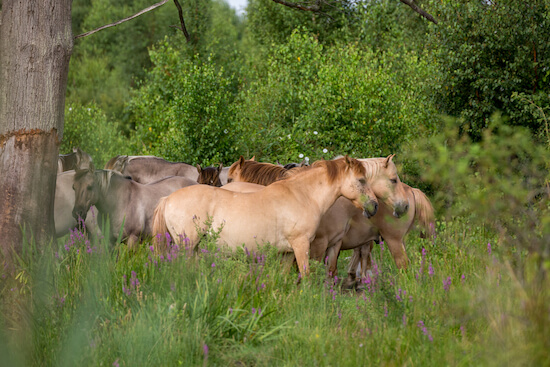 Konik ponies at Wicken Fen
Konik ponies at Wicken FenPlan Your Visit:
- Best For: Fenland landscapes, wild ponies, birdwatching.
- Key Wildlife: Konik Ponies, Bitterns, Hen Harriers, Dragonflies.
- Practical Info: National Trust property with entry fee. Toilets, café, and visitor centre available. Boardwalks make some areas accessible.
- Carol's Tip: Don't just stick to the main boardwalk. Take the longer paths to get away from the crowds for a better chance of spotting the ponies and feeling the true wildness of the Fen.
The Great Fen Project - Winding Back Time
In the heart of the Fens, an ambitious project is underway to connect two of the last fragments of wild fenland, creating a massive nature reserve for the future. Visiting these places feels like stepping into both the ancient past and a hopeful future.
Holme Fen
Close to my doorstep is Holme Fen, a remnant of Englands largest lake.
Here, two posts buried to their tops in 1851 now extend towards the vast sky. Standing beside them, on black peat soil that was once 4 meters under water, makes me feel like I'm on a slowly sinking ship. It's a stark and powerful reminder of how this landscape has been transformed.
Plan Your Visit:
- Best For: Understanding the unique history of the Fens, quiet woodland walks.
- To See: The famous Holme Fen Posts, Silver Birch woodlands, birds of prey
- Practical Info: A National Nature Reserve with free access. There are marked trails, but facilities are limited. It's a place for a peaceful, self-sufficient walk.
- Carol's Tip: Make a point to find the Holme Posts. Standing next to them and seeing with your own eyes how much the land has fallen is a truly profound experience that connects you directly to the history beneath your feet.
Woodwalton Fen
This is where I have been known to stand and daydream about the work being done to join the two remaining fragments of Fenland together again.
When I'm there, I can almost hear the booming bitterns and the bugling Cranes, their calls echoing over a vast sheet of water that shimmers like the ghost of Whittlesey Mere.
It's a powerful thought - that we can not only stop time, but begin to wind it back.
Plan Your Visit:
- Best For: Quiet contemplation, connecting with the vision of large-scale conservation.
- Key Wildlife: Famous for its rare insects and flowering meadows. A good place to listen for Cuckoos and other songbirds in spring. You might get a glimpse of the Chinese Water Deer, or Marsh Harriers soaring over the reed beds..
- Practical Info: Another National Nature Reserve managed as part of the Great Fen Project. It has a mix of paths and boardwalks.
- Carol's Tip: Walk quietly and let your imagination take over. This is a place to appreciate the future as much as the present. Think of it as visiting a cathedral of conservation in the making.
Gravel Pits and Reservoirs
Some of the richest wildlife habitats in the county aren't ancient at all; they're the legacy of industry. The vast holes left behind by gravel extraction have filled with water, creating a network of lakes that have become magnets for birdlife.
They are proof that nature can find a home anywhere.
Paxton Pits
This reserve gave me one of my proudest moments as a photographer.
I was sitting in a hide when a Great White Egret—a bird that was an almost mythical rarity in the UK not so long ago—landed right in front of me.
Unlike its smaller cousin, the Little Egret, this bird is a giant, an elegant spear-fisher standing tall among the reeds.
I managed to get a photograph that I was so pleased with, I entered it into a competition. To my astonishment, it won!
Paxton Pits will always be the place that gave me that thrill of seeing a rare jewel of the bird world and the confidence to share it. It is still showing on their sightings page.
Plan Your Visit:
- Best For: Birdwatching (especially herons and egrets), easy and accessible walks.
- Key Wildlife: Great White Egret, Little Egret, Cormorant, and a famous population of Nightingales in the spring.
- Practical Info: Managed by Huntingdonshire District Council. There is a visitor centre with a cafe and toilets. The network of well-marked, mostly flat paths makes it great for a gentle stroll. Free entry, but parking donations are encouraged.
- Carol's Tip: Find a seat in one of the main hides overlooking the water and be patient. This is a place that rewards those who are willing to sit quietly and simply watch the world go by. You never know what might show up.
- Guide: For the story of my first guided walk, and the delightful surprises along the way explore my page on Paxton Pits.
Grafham Water: The Reservoir That Beat Me
I must confess a failure.
Looking at the map, my husband and I naively decided we would walk around Grafham Water. Nine miles, we thought, how hard can that be?
It turns out, very hard! We were exhausted long before the end.
But even in our weariness, Grafham offered a moment of simple perfection. We sat on the massive dam bank, catching our breath, and watched the wagtails. They were flitting about, chasing insects with an energy we could only envy, their long tails perpetually bobbing. It was a perfect, quiet ending to an overly ambitious day.
Plan Your Visit:
- Best For: Long walks, cycling, watersports, and impressive open-water views.
- Key Wildlife: Consider it Rutland Water's quieter cousin. Excellent for water birds, especially in winter. Look for Goldeneyes, grebes, and even Great Northern Divers out on the main body of water.
- Practical Info: A large site managed by Anglian Water. It has multiple car parks (charges apply), a visitor centre, cafes, toilets, and cycle hire.
- Carol's Tip: Don't be like me and try to walk the whole 9-mile circuit unprepared! Pick a section, like the walk along the dam wall or a wander through the designated nature reserve at the western end. Sometimes the best moments, like watching the wagtails, don't require a marathon trek.
- Guide: For a map, and the variety of walks you can take (including shorter, easier options) check out the detailed guide to Grafham Water.
Ancient Woodlands: Whispers of the Past
While the Fens define the county's open spaces, its woodlands hold its oldest secrets.
These are places where you can feel the centuries in the gnarled bark of the oaks and the deep carpet of leaves underfoot. They offer a completely different kind of nature experience, intimate, enclosed, and full of quiet discoveries.
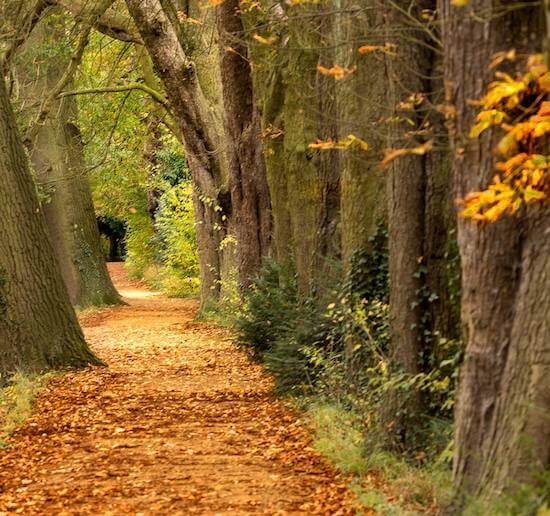
Brampton Wood
Every year, I make a pilgrimage to Brampton Wood for the bluebells.
You'd think it would be easy to photograph a sea of blue that carpets the woodland floor, but it’s one of the hardest shots to get right.
The light is never quite perfect, the colour never quite as vibrant as it is to the naked eye. But the annual attempt has become a treasured ritual.
There's nothing quite like the sight and scent of that shimmering blue haze under the fresh green canopy of spring.
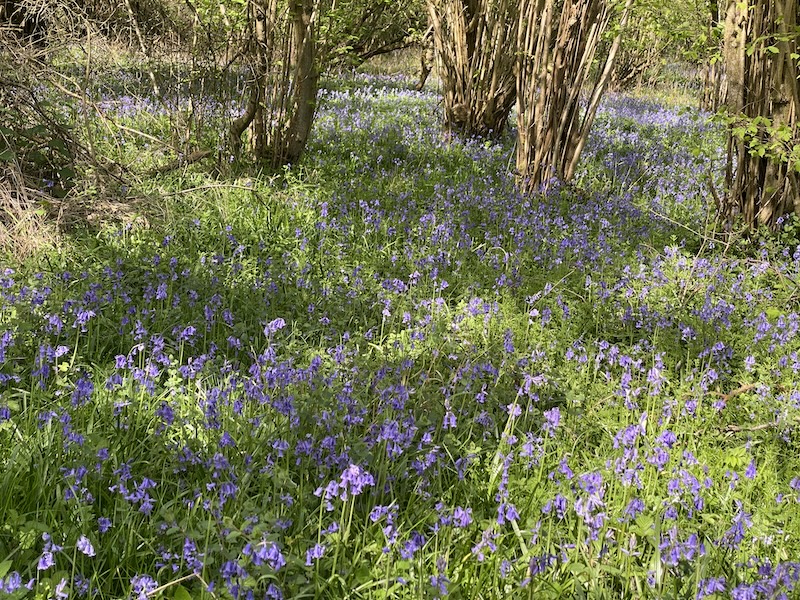
Plan Your Visit:
- Best For: Stunning bluebell displays in late April/early May, traditional woodland walks.
- Key Wildlife: Famous for its butterflies, including the rare Black Hairstreak. Listen for woodpeckers and other woodland birds.
- Practical Info: Managed by the Wildlife Trust for Bedfordshire, Cambridgeshire & Northamptonshire. There is a dedicated car park. The main paths can be muddy after rain, so wear good boots.
- Carol's Tip: Don't stress about getting the perfect photo of the bluebells—I never can! Instead, find a bench, put the camera away, and just take a moment to breathe it all in. The experience is more powerful than any picture.
- Guide: See the best times to visit for the Engish Bluebells and discover the quieter walking trails in my photographer's guide to Brampton Wood.
Monks Wood
My most vivid memory of Monks Wood is the feeling of pure panic.
It's one of Britain's largest ancient woodlands, and I had wandered deep into it, completely absorbed in macro photography.
One minute I was photographing a fascinating bracket fungus on a fallen log, the next I looked up and had absolutely no idea where I was. Every path looked the same.
That brief terror was a powerful reminder of the wood's scale and wildness. It's a place where you can truly lose yourself in the details at your feet.
Plan Your Visit:
- Best For: Getting lost in a large, historic woodland; macro photography of fungi and insects.
- Key Wildlife: A nationally important site for insects and fungi. Look for Speckled Wood butterflies dancing in the sunlit glades and listen for the "yaffle" of the Green Woodpecker.
- Practical Info: A National Nature Reserve managed by Natural England. There are several access points and parking in lay-bys along the surrounding roads. Be aware that the internal paths (or "rides") can be confusing.
- Carol's Tip: This wood is bigger than you think, so it’s wise to keep track of your route. Or, do as I did accidentally: embrace getting a little bit lost for a while. The best tiny discoveries are often found when you stop looking at the map and start looking at the ground in front of you.
- Guide: To navigate the historic rides without getting lost, see trail maps and seasonal highlights in the visitor's guide to Monks Wood.
Hidden Gems: Small Places, Big Surprises
Sometimes the most memorable moments don't happen in the vast reserves, but in the small, overlooked corners of the county. These are the places you might stumble upon by accident, offering a concentrated dose of natural wonder just when you least expect it.
RSPB Fowlmere
I always thought of Fowlmere as a place for birds. It’s famous for its reedbeds and the warblers that sing from them in spring.
But one unforgettable day, it showed me so much more. I was sitting quietly in a hide, looking out over the lagoon, when I saw a ripple on the far side.
It wasn't a bird. A head and antlers emerged from the reeds, and a magnificent Fallow Deer stepped cautiously into the water and began to drink. It was a moment of pure magic, a powerful reminder that you never truly know what you might see.
Plan Your Visit:
- Best For: Kingfisher sightings, chalk stream wildlife, a compact but rewarding walk.
- Key Wildlife: Kingfisher, Water Vole, Brown Trout (visible in the clear stream), and, as I discovered, Fallow Deer.
- Practical Info: An RSPB reserve with an entry fee for non-members. It has a reception building, toilets, and several hides. The circular path is flat and easy to walk.
- Carol's Tip: Look down as well as up! Peer into the incredibly clear water of the chalk stream as you cross the bridges; you can often see trout holding steady in the current. Fowlmere proves that big surprises can come in small packages.
- Guide: To find out where I saw the Fallow Deer and more photos from my visits, read my full guide to RSPB Fowlmere.
Holt Island
 Small Copper butterfly
Small Copper butterflyYou cross a small footbridge from the bustling, lovely town of St Ives, and you are immediately in another world.
Holt Island is a tiny sliver of wet woodland in the middle of the River Great Ouse. It’s damp, atmospheric, and feels wonderfully secret.
On one visit, I spotted a damselfly behaving oddly, laying its eggs into the bark of a willow branch overhanging the water. I realised with a jolt of excitement it was a Willow Emerald, a damselfly that has only recently colonised the UK.
To find such a rarity, a newcomer to our country, in this tiny, ancient-feeling place was a genuine thrill.
Plan Your Visit:
- Best For: A quick dose of wildness, finding rare insects, a perfect natural escape during a town visit.
- Key Wildlife: Famous for the Willow Emerald Damselfly. Also good for other dragonflies, butterflies, and woodland birds.
- Practical Info: A Local Nature Reserve managed by volunteers. Check opening times, as they can be limited (often weekends). Free entry.
- Carol's Tip: This isn't a place for a long hike, but for a short, magical immersion. Visit in late summer, walk slowly, and look closely at the willow branches overhanging the river path. You might just find the same emerald jewel that I did. It’s proof that adventure can be found just a few steps off the beaten track.
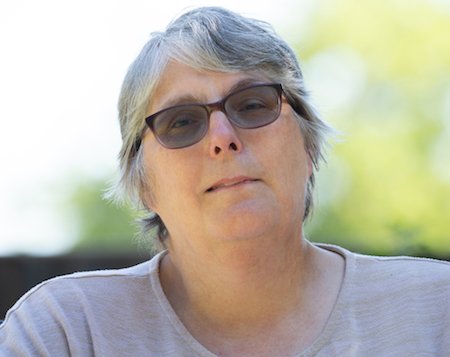
About the Author
I’m a wildlife photographer who learns on everyday walks. This site is my field notebook: practical photo tips, gentle ID help, and walk ideas to help you see more—wherever you are.
Step Behind the Wild Lens
Seasonal field notes from my wildlife walks: recent encounters, the story behind favourite photos, and simple, practical tips you can use on your next outing.


